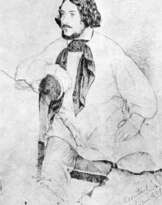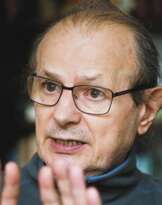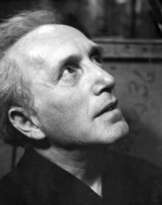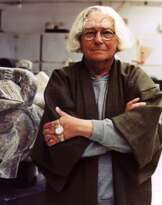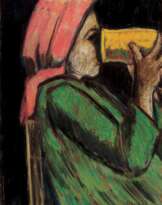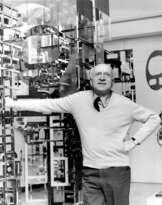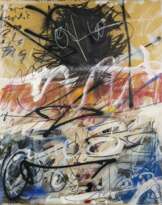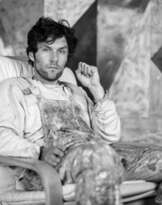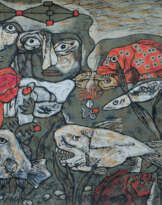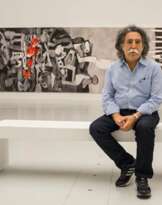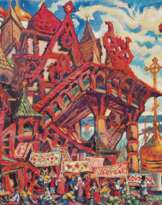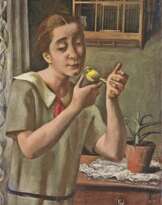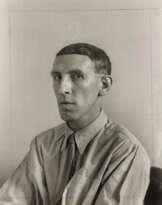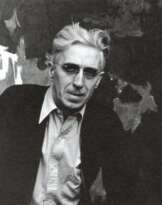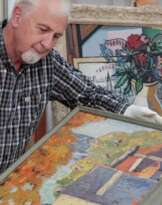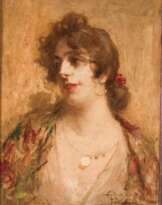Vilmos Aba-Novak (1894 - 1941)
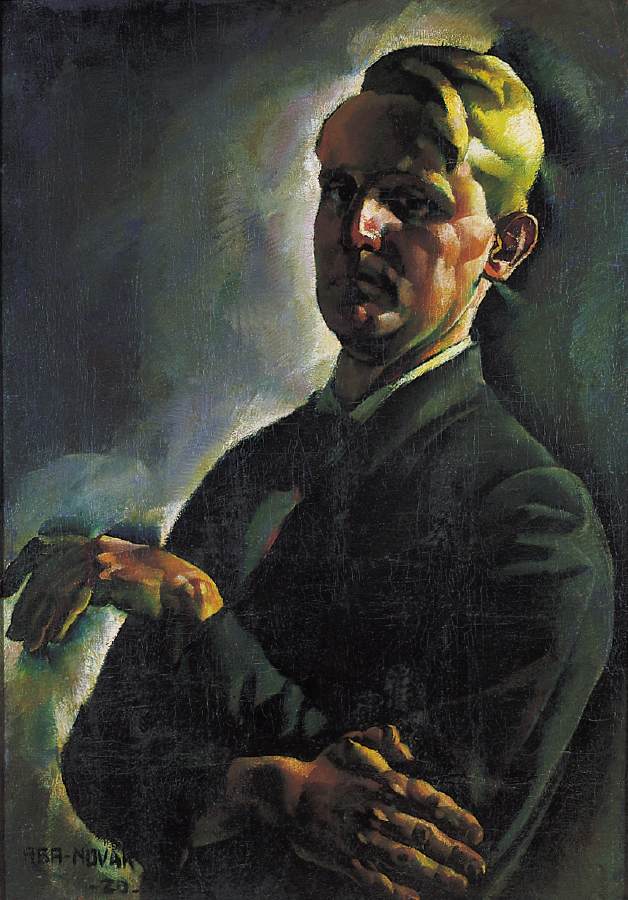
Vilmos Aba-Novak
Vilmos Aba-Novák was a distinguished Hungarian artist, celebrated for his unique blend of Expressionism with classical and Renaissance influences. Born in Budapest in 1894, he was deeply influenced by his experiences in the Austro-Hungarian Army during World War I, which later permeated his art. Aba-Novák is best known for his vibrant frescoes and murals that decorate several public buildings in Hungary, including churches and civic buildings in Szeged and Budapest.
His works, characterized by dynamic compositions and a bold use of color, often depicted village fairs, circuses, and everyday Hungarian life, bringing an almost fantastical quality to these scenes. His remarkable ability to combine traditional subjects with modern artistic elements made his work a significant contribution to modern Hungarian art. Aba-Novák's art was not only appreciated in his homeland but also internationally, earning him major awards like the Grand Prize at the Paris World Exhibition in 1937 and at the 1940 Venice Biennale.
For art collectors and enthusiasts interested in exploring or purchasing Vilmos Aba-Novák's works, staying informed about upcoming sales and exhibitions is crucial. Signing up for updates can provide valuable insights into available pieces and auction events. To keep abreast of such opportunities, consider registering for newsletters or alerts specifically tailored to Aba-Novák's art. This will ensure you don't miss out on acquiring a piece of this unique artistic heritage.
| Date and place of birt: | 15 march 1894, Budapest, Austria-Hungary (1868-1918) |
|---|---|
| Date and place of death: | 29 september 1941, Budapest, Hungary |
| Nationality: | Hungary, Austria-Hungary (1868-1918) |
| Period of activity: | XX century |
| Specialization: | Genre painter, Graphic artist, Painter, Portraitist |
| Genre: | Genre art, Landscape painting, Portrait |
| Art style: | Expressionism |
